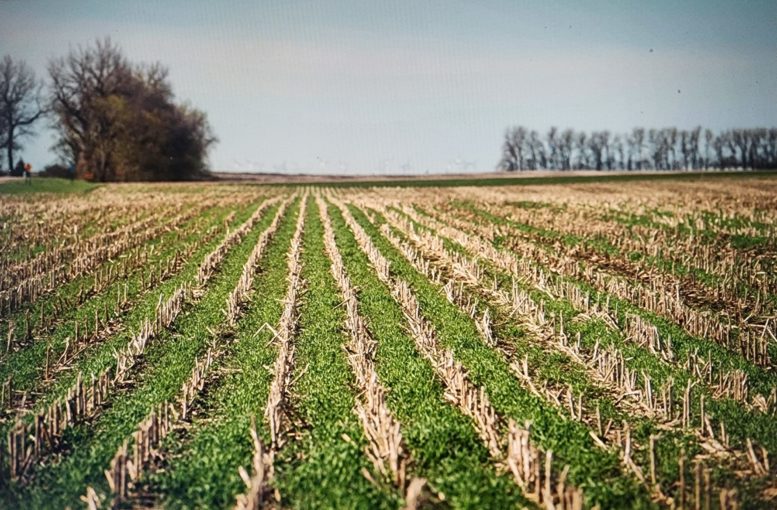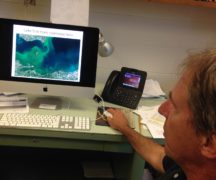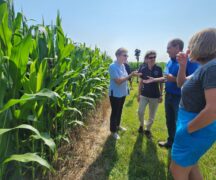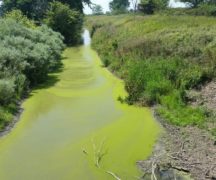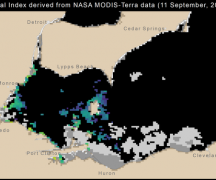By JAN LARSON McLAUGHLIN
BG Independent News
Most farmers want to be good stewards of the land. And most acknowledge that some crop practices can help protect the region’s water quality.
But somewhere between believing in conservation methods and actually practicing them is a gap. Those good intentions do nothing to keep harmful nutrients from reaching local waterways, stressed Dr. Robyn Wilson, of the Environmental and Social Sustainability Lab at Ohio State University.
The professor of risk analysis and decision science at OSU would like to help close that gap. Wilson, who spoke last week to the Bowling Green Kiwanis Club, comes to conservation from the unusual perspective of growing up on a farm near Findlay and being trained as a behavioral scientist.
This region – the Great Black Swamp – poses significant challenges for farmers. Because the landscape naturally holds onto water, farmers have worked for centuries to drain the swamp. Their efforts to get rid of the water as quickly as possible have resulted in great crop production.
But the wetlands that previously acted as a filter to runoff, no longer function to slow down the drainage into public waterways, Wilson said. And as climate changes create warmer, wetter and wilder conditions, the problems are exacerbated.
Big spring rains drive nutrients – fertilizer – into ditches, rivers and Lake Erie, leading to harmful algal blooms and poor water quality.
Research has shown that two farming practices could greatly slow the runoff of fertilizer, Wilson said. Planting cover crops and injecting the nutrients under the soil could help solve the water quality issues, she said.
“We know what’s causing it and we know how to fix it,” Wilson said. “We could solve Lake Erie’s water quality problems.”
But while farmers believe these practices could help, fewer than a third have actually implemented the methods, she said. A study of farmers in the Great Black Swamp area showed 65% see themselves as good conservationists.
“Good farmers care about soil health and water quality,” Wilson said. “But we have plenty of farmers with strong conservation identities who are doing very little.”
If 70% of farmers adopted these practices, she said, the region would experience a big difference in water quality.
“It’s the failure we have as humans to follow through with good intentions,” Wilson said.
Farmers have been slow to participate in cover crop programs, despite all the benefits. The cover crops can prevent soil and wind erosion, combat nutrient and soil runoff into nearby waterways, improve the soil and add nutrients, suppress weeds, improve the availability of water in the soil, and break pest cycles.
Surveys of Ohio farmers showed they think differently about cover crops depending on the time of year due to fluctuations in financial stability, the amount of work to do, and stress. In January and February, farmers are more likely to be financially stable, think more clearly, and have time to consider conservation practices.
“Cover crops is one of the trickiest things to ask farmers to do,” Wilson said.
Growing up on a farm and studying as a behavioral scientist, Wilson understands the importance of how conservation topics are presented to farmers. She knows better than using the politically polarizing term “climate change” in a survey.
“They’re all going to throw it away,” if the issue is presented as climate change, she said. The phrase “changing weather patterns” is more acceptable in the farming community.
“All farmers know the climate is changing,” she said. However, there is disagreement over whether the changes are caused by humans.
“I think we have a ways to go on that front,” Wilson said.

